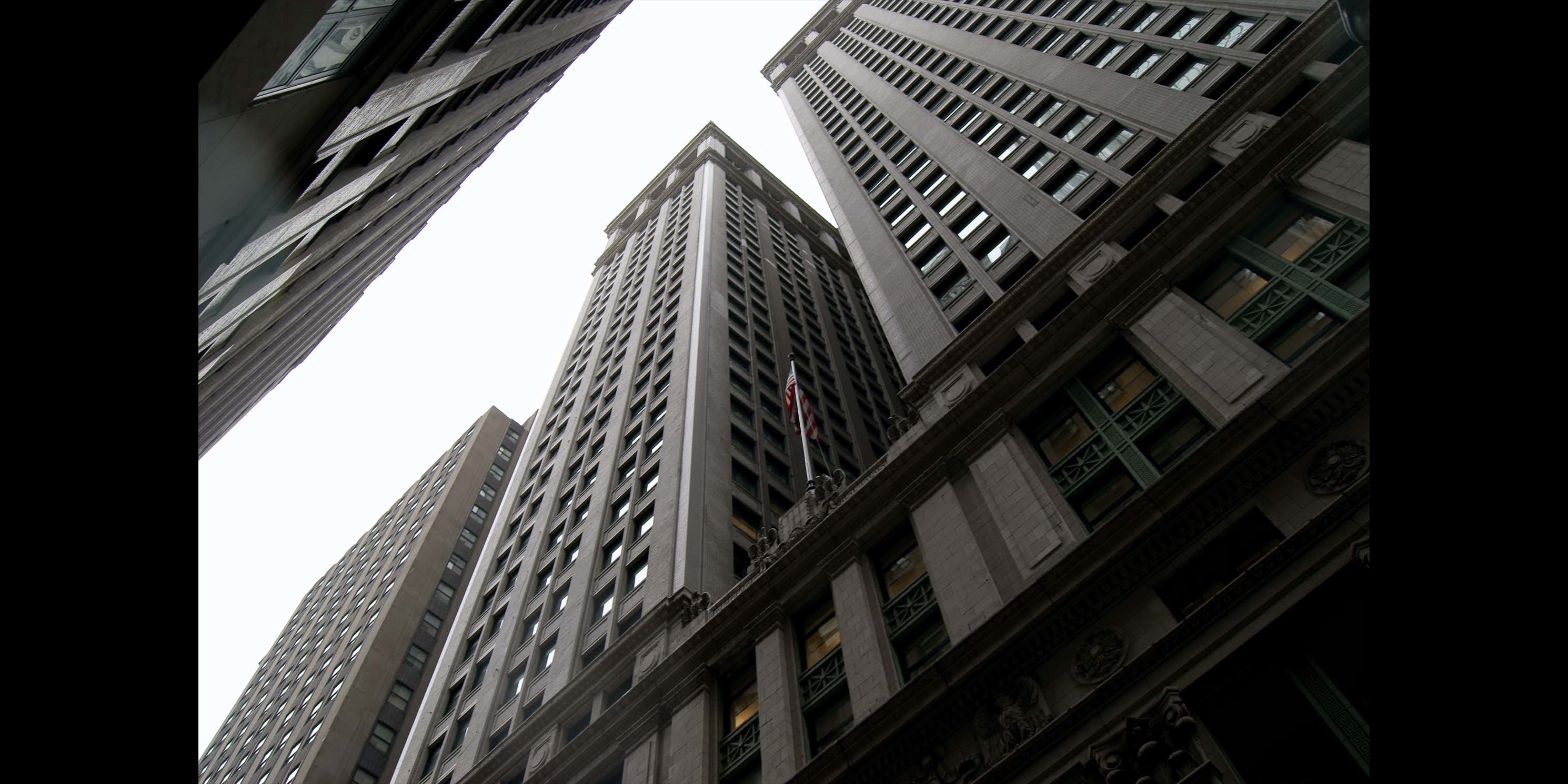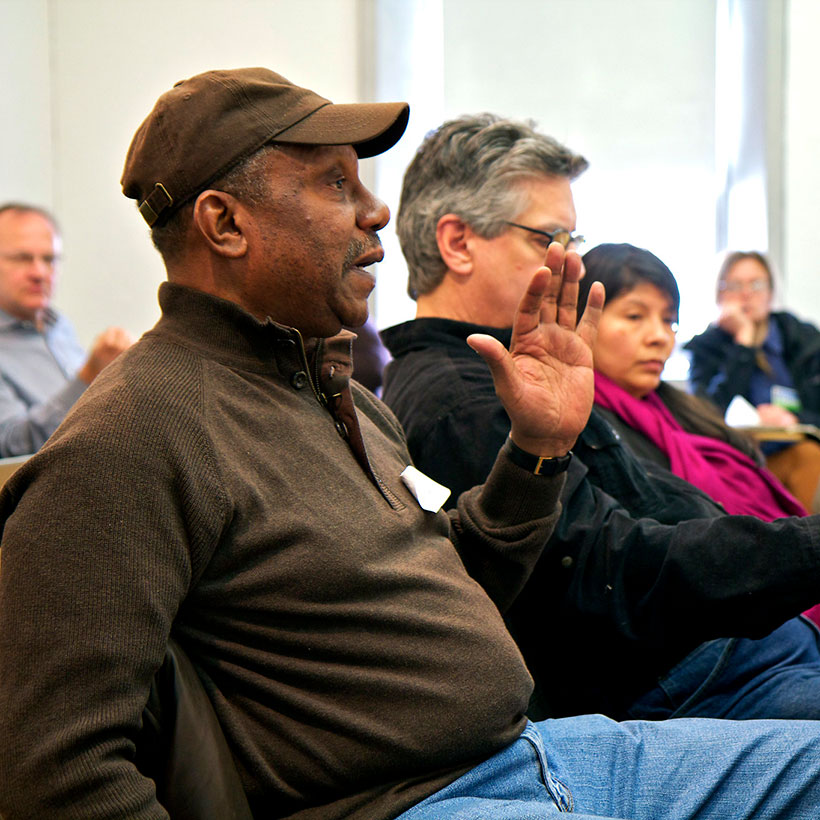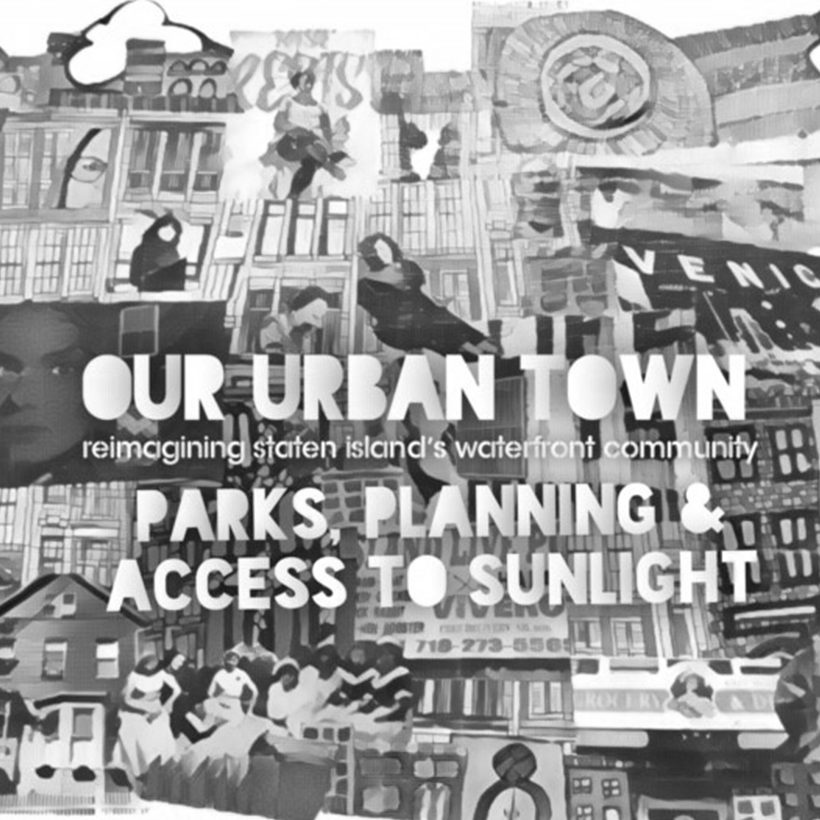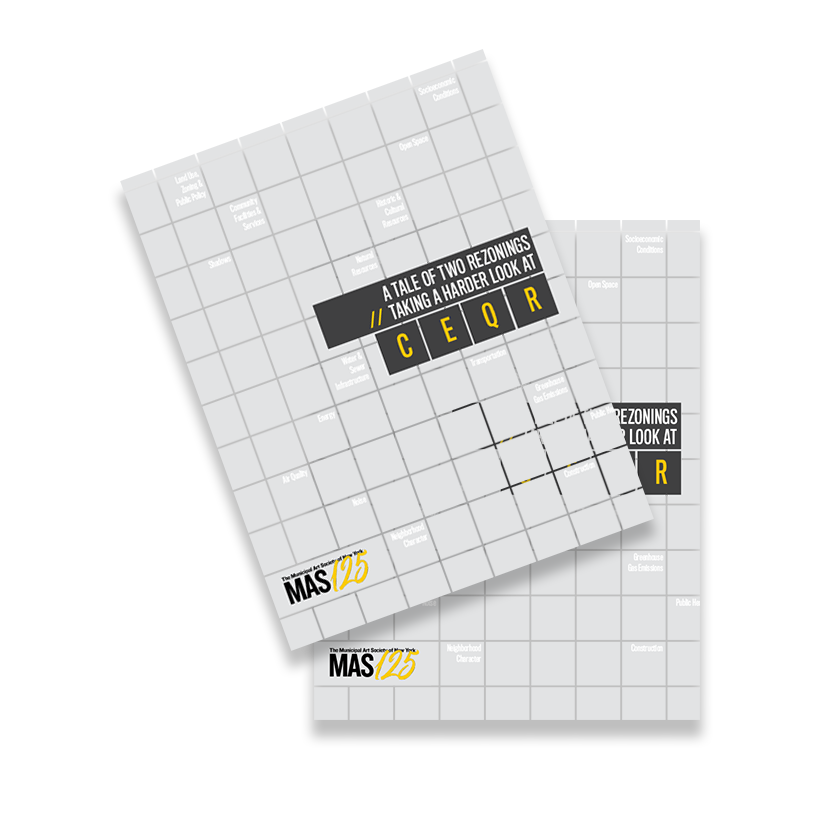Land Review Process Must Include Race and Social Vulnerability
We applaud Public Advocate Williams for his work bringing Intro 1572-A before the Council
The Municipal Art Society of New York (MAS) has long been one of the city’s strongest advocates for reforming the City Environmental Quality Review (CEQR) process. The past year has underscored the disparities across our city that are measurable on the basis of race, as evidenced by the impact of COVID-19 on health, housing, employment, and access to opportunity. We are confident that increasing disclosure on race and social vulnerability in combination with a review of mitigation measures and programs would move public review towards more equitable outcomes.
Download Testimony
We applaud Public Advocate Williams for his work bringing Intro 1572-A before the Council. It as a critical component in reforming New York City’s public land use review procedures. Requiring a racial disparity report for all applications over 50,000 square feet formally embeds the consideration of race and vulnerability into discretionary land use decisions that affect the built environment. As laid out, the assessment provides a solid basis for evaluating characteristics, trends, and community needs of a project area, while also providing criteria to consider impediments to future housing, jobs, and community services. The required disclosure of potential mitigation measures, including City programs and policies, assists in identifying strategies to further racial equity.
Intro 1572-A can be further strengthened by better aligning anticipated housing and employment impacts. Disproportionate housing needs persist based upon a history of unenforced fair housing laws, tenant harassment, and other factors that limit housing choice. The racial impact report should disclose the extent to which the application will address the most critical local housing needs and expand choice for communities of color. With regard to employment, the analysis must more fully account for sectors at risk of displacement alongside anticipating future job opportunities. This is especially important when land use applications seek to shift commercial and manufacturing uses to residential ones.
As the City seeks to foster substantial new development and introduce a massive influx of residents, it has the dual responsibility to maintain an area’s demographic and business diversity, preserve historic character, and ensure infrastructure is in place to accommodate growth. While Intro 1572-A assists in those goals, additional reforms are needed to effectively overhaul land use review, including updating CEQR Technical Manual methodology, increasing transparency with regard to the availability of important data and mitigation measures, and strategies to increase accessibility and public participation in public review that more fully gives neighborhoods a seat at the table.
As the City considers a more comprehensive approach to land use planning, leading with race is critical.
Thank you for the opportunity to provide comments on this important bill.
Sincerely,
Spencer Williams, AICP, Assoc. AIA
Director of Advocacy
The Municipal Art Society of New York



